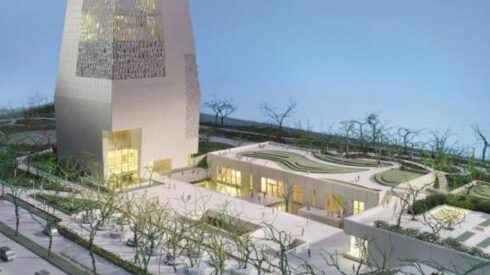A plan long in the works to protect South Side residents from rising rents and displacement caused by the Obama Presidential Center is on its way to City Council for a vote after passing out of committee Wednesday.
The so-called Jackson Park housing pilot would earmark some of the area’s 184 vacant lots for affordable housing, offer property tax relief for residents and require more notice to tenants whose landlords aren’t renewing their leases.
The final blueprint is a first step “to make sure that we protect some of the more vulnerable residents in the ward,” said South Shore Ald. Desmond Yancy (5th), the proposal’s chief sponsor.
Yancy’s plan passed the city’s Housing Committee unanimously Wednesday after several protections for tenants citywide were nixed — provisions that one Council member said could have sparked opposition from Chicago’s real estate community.
The measure is now set for a full vote at Thursday’s full Council meeting.
The $6 million plan, which is expected to be funded through a mix of city and philanthropic support, is meant to offset the effects that residents around the yet-to-open center have already started to feel.
Housing advocates have had their sights set on a so-called community benefits agreement to offset gentrification ever since the center was announced in 2015 and have chipped away at that goal in the years since.
In 2020, 20th Ward Ald. Jeanette Taylor spearheaded a measure meant to preserve affordable housing in Woodlawn, but it only scratched the surface, Taylor said Wednesday. This latest agreement represents a major win for advocates and Council members who said it “builds on” Taylor’s work.
Since 2015, median rents in the pilot program area have increased by 43%, with home values spiking 130%, according to the mayor’s office and Yancy.
The measure would reserve 30 city-owned, vacant lots for affordable homeownership, such as single-family or two-flat homes and rentals. It would give preference for those homes to people displaced since the announcement of the Obama center, which continues to take shape ahead of a planned 2026 opening.
Long-term residents in the pilot area would need to receive extended notices of lease nonrenewals, up to 120 days. The pilot also would create a grant program, with awards of up to $5,000 to help homeowners pay off property tax debt.
The Obama Center didn’t comment on the specifics of the proposal but said that “when transformative economic development creates unintended consequences…the Chicago City Council has taken important steps to keep vulnerable residents in their homes.”
The trade association, Illinois REALTORS, in a statement slammed the proposal as “bad housing policy that will harm Chicago property owners” but praised changes stripping some tenant protections.
A last-minute amendment to the ordinance distributed to Council members moments before the hearing began eliminated several tenant protections, including creating a city-run tenant advocacy office. The final version also killed an initial provision to establish a “rental registry” of all neighborhood rental properties, their owners and monthly rent rates.
A representative from Mayor Brandon Johnson’s office said after the vote that those provisions are citywide issues they decided to separate from the local pilot area protections.
The pilot area covers residents south and west of the presidential center, with most of the more affluent Hyde Park, north of the center, excluded.
“I have heard from Hyde Park residents who are dealing with some of the same stuff. They’ve seen increased rents, they’ve seen property values go up, and we’ll be looking for some similar sort of relief,” Yancy said. “But I think it’s eating an elephant one bite at a time. We’re trying to solve for this really big issue, and trying to do it in steps and phases that allow us to make the most impact.”
Yancy brokered the final version of the plan in eleventh-hour negotiations with neighboring Council members, including those who didn’t want their wards to be part of the program.
The area includes parts of Alds. Yancy’s, Will Hall’s (6th), and Jeanette Taylor’s (20th) wards, excluding the wards of Ald. Greg Mitchell (7th) and Michelle Harris (8th).
Mitchell said earmarking vacant lots solely for affordable housing rentals would deter development in his ward.
Instead of affordable housing units, Mitchell wants to see “rows” of vacant lots in his ward turned into strip malls, condos to own, or a mix of both.
“It’s a whole chessboard. I want to make sure I’m able to move my pieces,” Mitchell said. “I’m not void of renting in my ward. I have a lot of opportunities for people to rent, but what has declined over the years is my homeownership.
“I don’t get conversations about ‘I’m worried about getting displaced,’” he said.
Still, Mitchell said he is “not obstructing [the ordinance] at all” because it’s endorsed by the Council members included in the pilot area.
In all, the program would cost about $6 million to execute — with $3 million in Housing Department funding to pay for grants to build affordable housing, and $3 million in philanthropic money the city has yet to raise, to pay for the property tax relief program, said Jung Yoon, Johnson’s chief of policy.
“This ordinance, as it is, is budget-neutral, because we are utilizing dollars we already have, or we’ll be raising from philanthropy,” said Yoon. “We are being very financially responsible with this package.”

Want more insights? Join Working Title - our career elevating newsletter and get the future of work delivered weekly.
